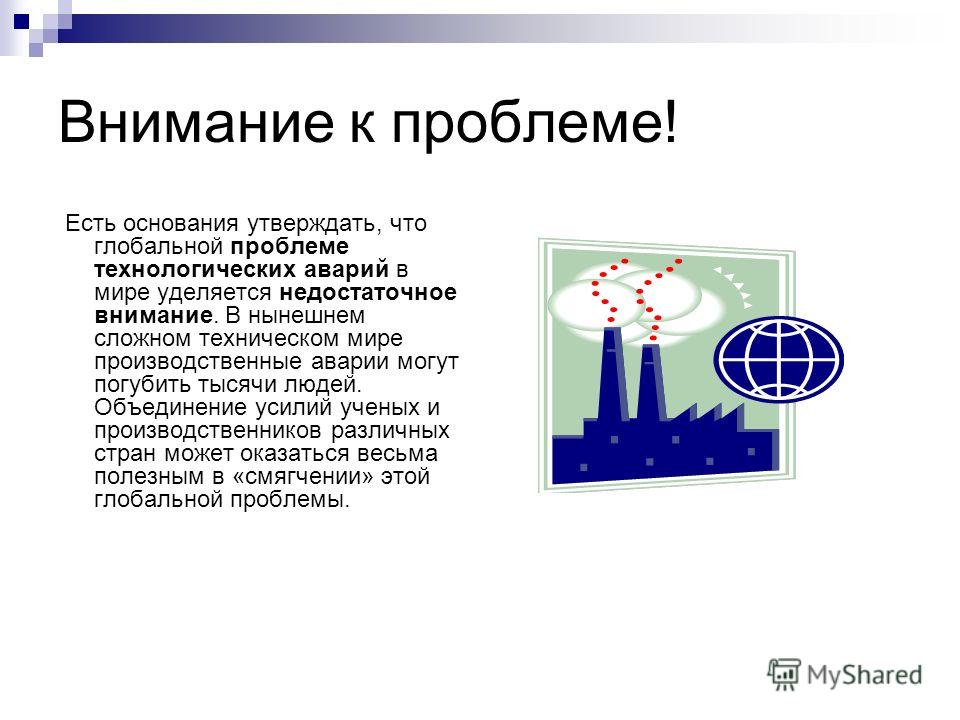Man-made disasters appeared immediately after man began to invent new technologies. Such incidents are inevitable payment for technological progress. The phrase "technological (man-made) disaster" needs to be deciphered, writes Washington ProFile. If the term "catastrophe" is clear, then the definition of "technological" is more complicated. As you know, technologies are not necessarily ways of producing cars, electricity or electronic devices. If we summarize the most general definitions of this concept, which are scattered in abundance in the specialized literature, then we can say that technologies are the means of achieving goals set and sanctioned by society, conditioned by the state of knowledge and social efficiency. In this sense, technologies arose simultaneously with the appearance of man, so it is no coincidence that anthropologists speak of technologies of the Stone or Bronze Age. In fact, technology simply continues the natural tendency of all living things to dominate the environment, or at least resist its pressure in the struggle for existence. Consequently, technological disasters can (and have happened) not only in our time, but also in the very distant past.
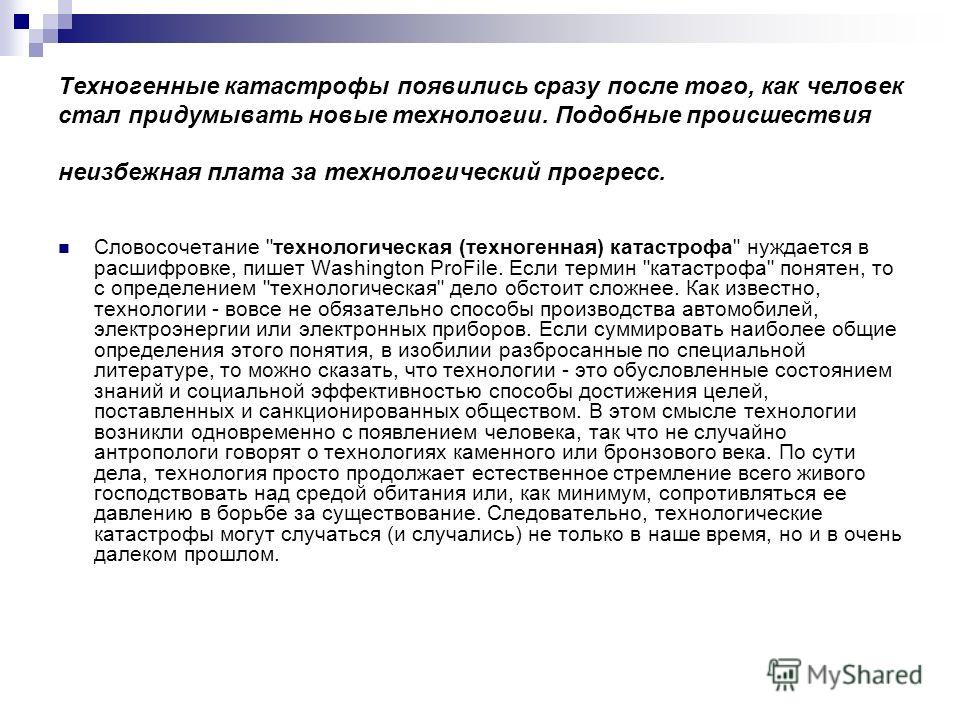
A technological catastrophe is usually called a cataclysm caused by anomalies of technological systems. This means not only their accidental or non-accidental failures, malfunctions and breakdowns, but also the unforeseen and undesirable consequences of their normal functioning. This definition makes it possible to immediately cut off both the destructive consequences of hostilities and sabotage, terrorist attacks and other misfortunes caused by deliberate and malicious interference in the operation of these systems.

Man-made disasters, catastrophes of megacities Regardless of the primary cause - accidents, sabotage, missile and bomb strikes or economic crises, the main damaging factor is man-made disasters and a systemic crisis of life support infrastructure. “Systemic” means that the larger the catastrophe, the more the individual factors of the catastrophe reinforce each other according to the “domino principle”: energy collapse paralyzes transport, communications and water supply, paralysis of transport interferes with rescue operations and food delivery, and so on.
![]()
The Chernobyl accident Chernobyl is the worst disaster in the nuclear power industry. The point is not even that as a result of the explosion of the fourth reactor, radioactive fallout fell in Sweden. The attempts of the Soviet government to silence and then downplay the scale of the catastrophe turned out to be more terrible. The first signs of something terrible, hopelessly irreparable, appeared on Monday, at 9 a.m. April 28, 1986, when specialists at the nuclear power plant in Forsmark, 60 miles from Stockholm, drew attention to the alarms that appeared on the ghostly green screens. The devices showed the level of radiation, and it was so unusually high that the specialists were horrified. First guess: the leak came from a reactor at their station. But a thorough inspection of the equipment and its control devices did not reveal anything. Nevertheless, the sensors showed that the level of radiation in the air was four times higher than the maximum permissible levels.
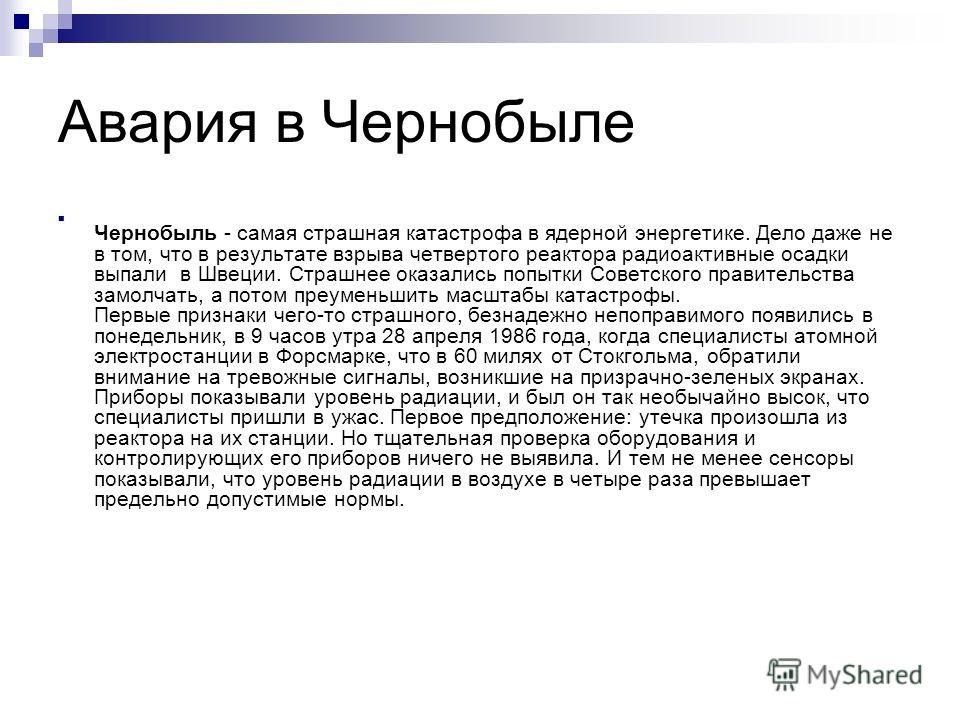
Geiger counters were urgently used to immediately check all six hundred workers. Even these hastily obtained data showed that each worker received a dose of radiation above the acceptable level. In the area surrounding the station, the same thing was repeated - the soil and plant samples contained an incredibly high amount of radioactive particles. Sweden, like many other countries in Europe, was attacked by a silent, invisible, colorless and odorless assassin. Many hours before the events described above, Leonid Telyatnikov, the head of the fire department of the Chernobyl nuclear power plant, was resting at home. He had accumulated several days off, and Telyatnikov was happy about the upcoming days off. On April 26, at 1.32 am, the phone suddenly rang, and the dispassionate voice of the attendant announced that an "incident" had taken place at the nuclear power plant.
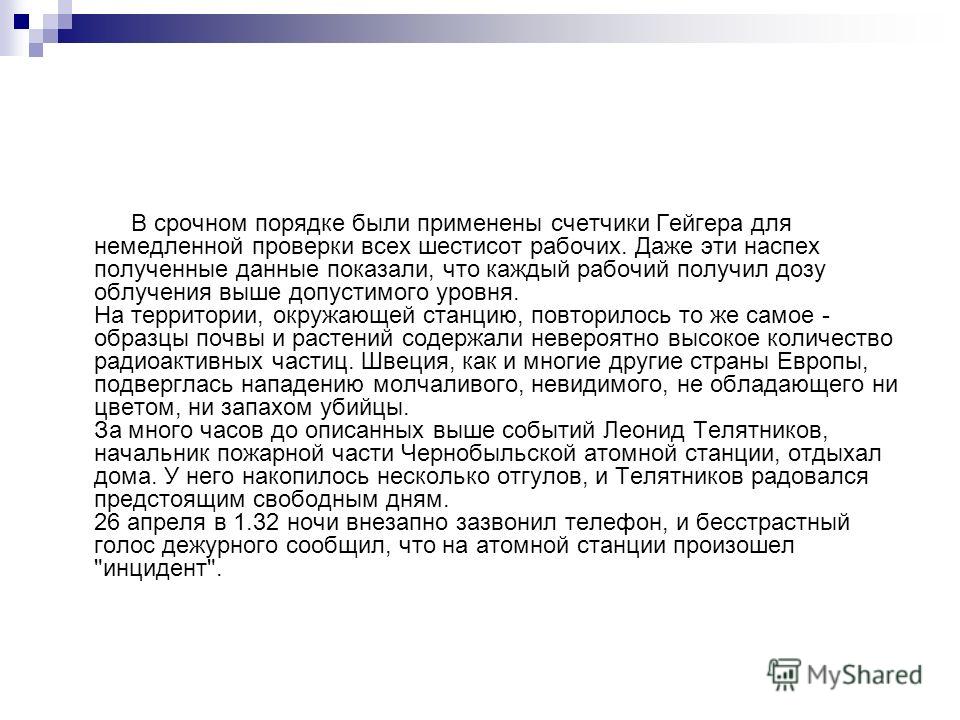
On a bright starry night, Telyatnikov with his team of 29 firefighters rushed to the station. Soon, a bright orange glow appeared on the horizon. "I had absolutely no idea what happened and what awaits us," Telyatnikov recalled. "But when we arrived at the station, I saw the ruins covered with flashes of lights resembling Bengal. Then I noticed a bluish glow over the ruins of the fourth reactor and spots of fire on the surrounding buildings. The silence and the flickering lights were eerie. " Protected only by ordinary boots and a fire helmet, Telyatnikov and his comrades withstood the worst disaster that had occurred in the entire history of the operation of nuclear power plants. Later, for his unparalleled courage and bravery, he was awarded the title of Hero of the Soviet Union.
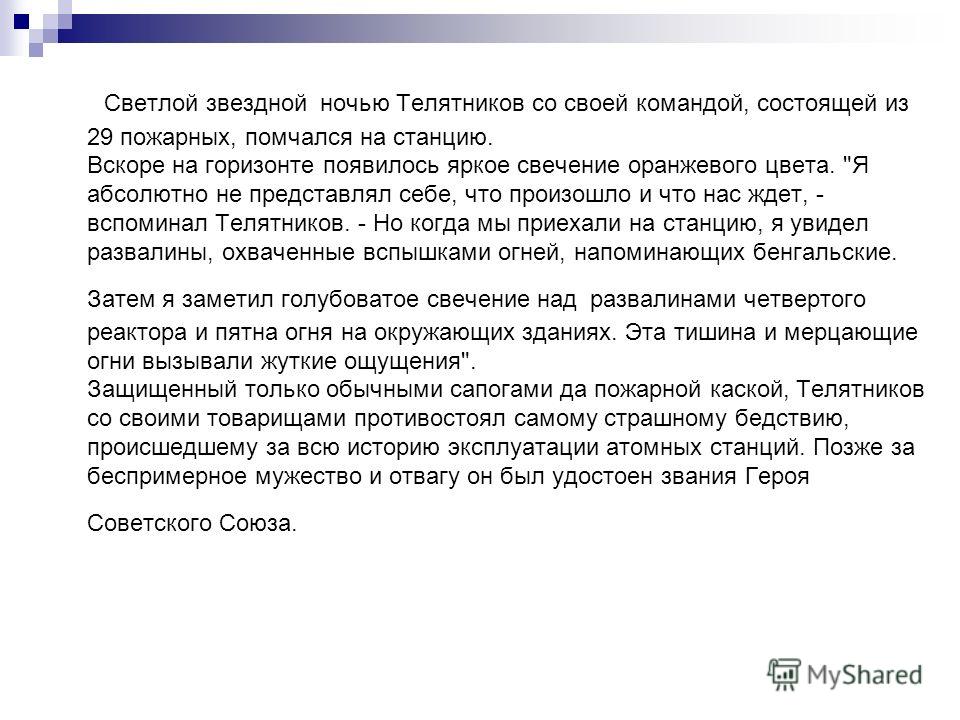
The sinking of the Titanic is a man-made disaster, the main, but by no means the only reason for which most likely was the poor-quality riveting of the ship's hull metal at the shipyards of the shipbuilding company Harland and Wolff. At the same time, the catastrophe of September 11, 2001 is not a technological one, since it was caused by the actions of kamikaze terrorists.

RMS Titanic, SS Titanic, a British Olympic-class liner, laid down on March 31, 1909 at the Harland & Wolf shipyards in Queens Island (Belfast, Northern Ireland), launched on water on May 31, 1911, passed sea trials on April 2, 1912 The largest passenger steamer in the world at the time of its construction, owned by the White Star Line. During the first flight on April 14, 1912, it collided with an iceberg and sank after 2 hours and 40 minutes. He had 1316 passengers and 891 crew members on board, a total of 2207 people (that is, 62% of the planned load). Of this number of passengers and crew members, 706 survived. The Titanic disaster became legendary and was one of the largest shipwrecks in history. Several feature films based on her storyline were shot by the British Liner Olympic Harland and Wolf Steamer White Star Line April 14, 1912 Iceberg
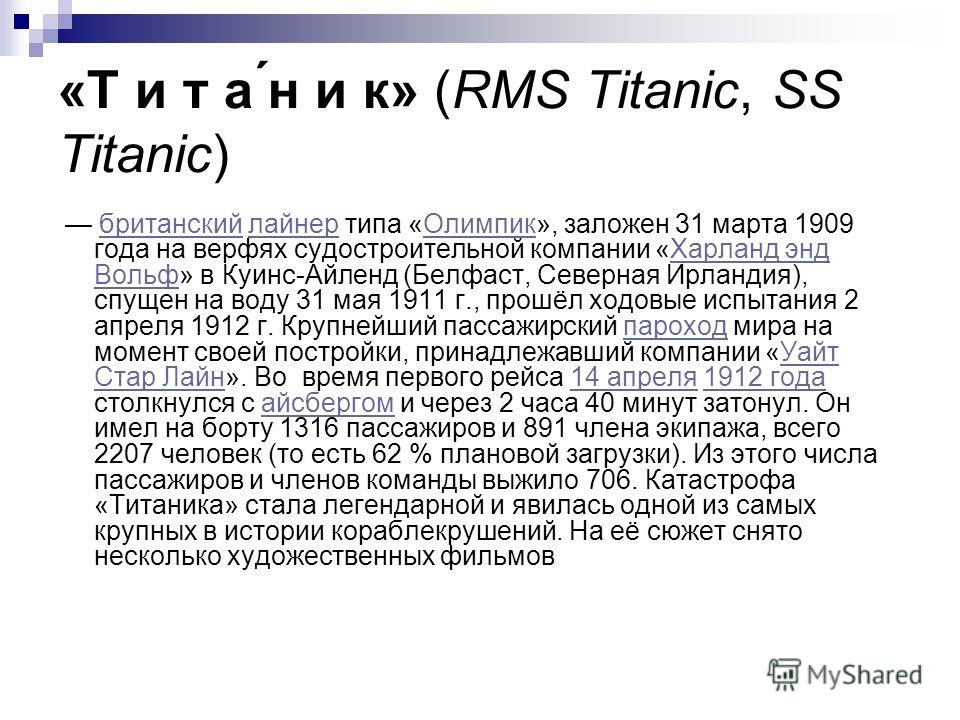
The mustard dump has become a huge white spot on the body of Russia. WHITE SPOT is a man-made anomalous zone in the Kambara region of Udmurtia, a place where mustard gas (a chemical warfare agent) was brought in and burned in years. The area of the spot is approximately 50 hectares. It is completely covered with lime, for which it got its name. People talk about a variety of mysterious phenomena taking place in this area. But this is more due to the secrecy regime, which arouses increased curiosity and gives rise to fantasy, than real anomalous effects.
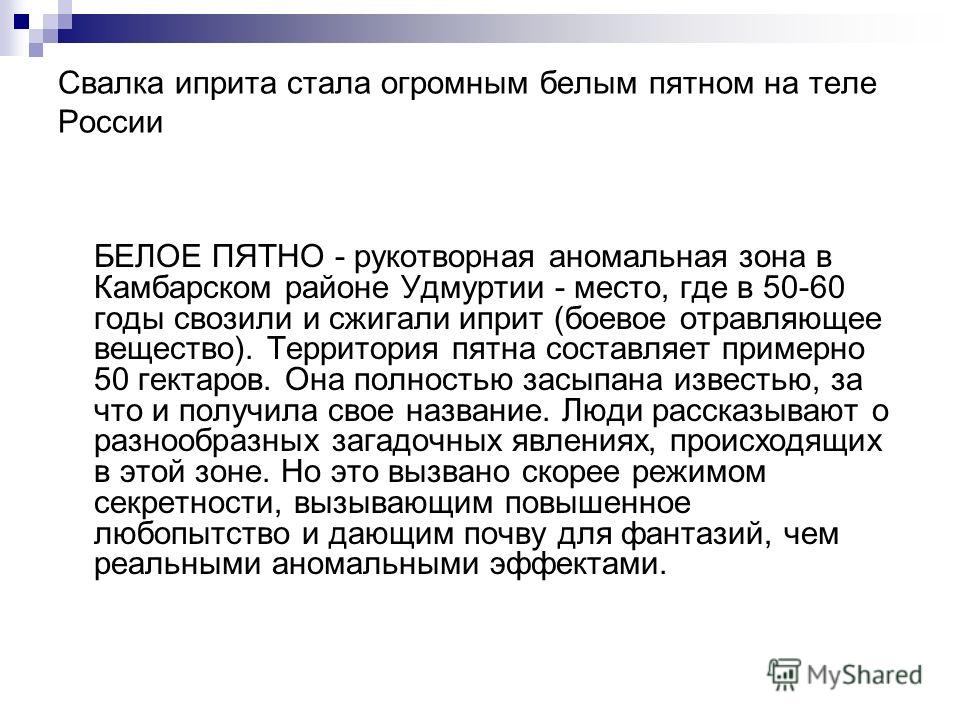
Chemical disaster in Seveso, Italy In July 1976, the small Italian town of Seveso fell victim to a terrible disaster at a local chemical plant. A deadly cloud of poisonous gas erupted into the atmosphere. Its devastating consequences will affect the lives of many generations of city dwellers. For many years after the disaster, Seveso was a ghost town. Abandoned by people, it looked like a scenery for some fantastic movie. As if behind the Berlin Wall, behind the billboards with inscriptions about the ecological disaster, houses, shops, restaurants, schools took refuge ... "Contaminated area - do not enter!" - read the inscriptions in five languages. Telephone wires hung limply: no one called there or from there anymore. The once vibrant and beautiful town has become a dead zone. Seveso became known as the Italian Hiroshima.
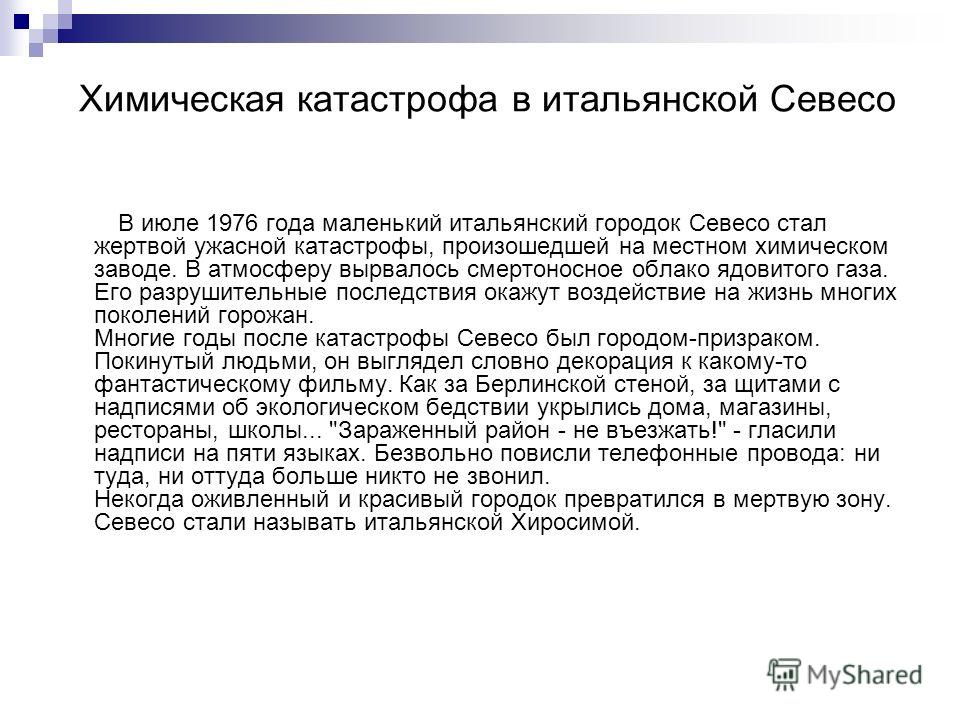
It happened on June 10, 1976. An explosion at a Swiss-owned chemical plant released into the atmosphere a cloud of dioxin, one of the deadliest poisons known to man. A cloud hung over an industrial suburb, and then the poison began to settle on houses and gardens. Thousands of people developed bouts of nausea, weakened vision, developed eye disease, in which the outlines of objects seemed blurry and unsteady. As with the Chernobyl disaster, which happened later, human error turned into a disaster on a planetary scale for the unsuspecting residents of Seveso. Dioxin is a by-product in the manufacture of trichlorophenol, which is used to make deodorants and soaps. With just four ounces (about 90 milligrams) of this substance diluted in water, that's enough to kill 8 million people. On that black summer day, a demon broke free, capable of killing 100 million. It takes many years to assess all the consequences of soil poisoning, to determine how many troubles it will still bring to future generations of people.
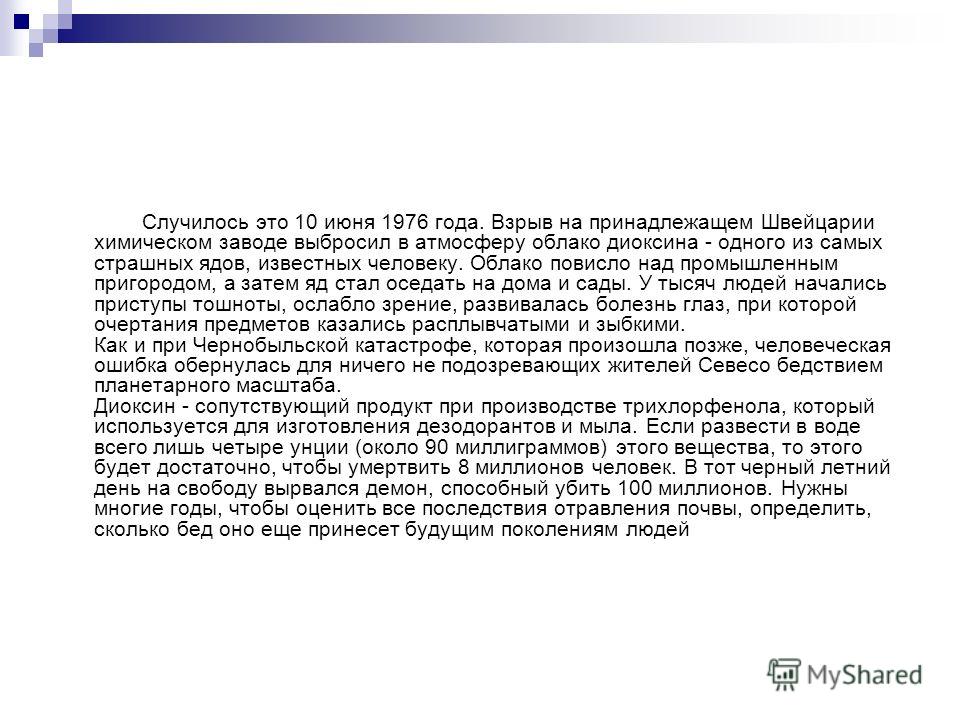
The largest railway tragedy Late in the evening of June 3, 1989, on the Trans-Siberian Railway near Ufa, at the time of the meeting between the Adler-Novosibirsk and Novosibirsk-Adler trains, the largest railway tragedy in Russia and the former USSR occurred - a gas explosion that killed more than 600 people. A small crack in the pipeline next to the mainline caused gas to accumulate in the lowland through which the trains were traveling. According to some reports, the leak occurred over a period of days, during which time heavy smoke was observed on the railroad tracks. An accidental spark from under the pantograph of an electric locomotive at the moment the trains met led to a detonation and a monstrous tragedy. The explosion was of such force that the cars were thrown by the shock wave for 500 meters or more. The Adler-Novosibirsk train consisted of 18 carriages, the oncoming one - of 20. There were about 1300 passengers in them, and in several carriages on the train bound for the Black Sea - only children aged 7-10 years. 26 cars were completely burnt out as a result of the fire that broke out at the scene of the explosion, 600 people (including 200 children) died, more than 600 became disabled, receiving multiple burns. At first, the tragedy was considered a grandiose sabotage or terrorist attack. However, a long-term investigation established that the cause was a chain of random events - weather conditions contributed to the accumulation of gas, the meeting of two trains took place exactly on this section of the highway, a spark from under the pantograph led to an explosion ... stop the train. The pipeline, which ran next to the highway, was liquidated, and a monument to the victims of the tragedy was erected near Ufa, where all 600 victims are listed by name.

Technological disasters are usually opposed to natural ones, however, and this requires clarification. All disasters are ultimately the consequences of certain human actions or lack thereof. A disaster of any origin is a physical event in a social context. Technological (man-made) disasters are also based on social causes, since technical systems are designed, manufactured and controlled by people and ensure the achievement of certain socially significant goals. Energy, nuclear, infrastructural, transport, environmental and space accidents and disasters are ultimately caused by a mismatch in the interaction of elements of complex systems, in the creation and functioning of which both people and certain elements of the technologies created by them are involved. In this type of disaster, as technology develops, the human factor begins to play an increasing role, which manifests itself in engineering miscalculations, personnel errors, and ineffective assistance from rescue services. The increase in the size and power of technical systems increases the risk of human, material and environmental losses - such is the price of technological progress
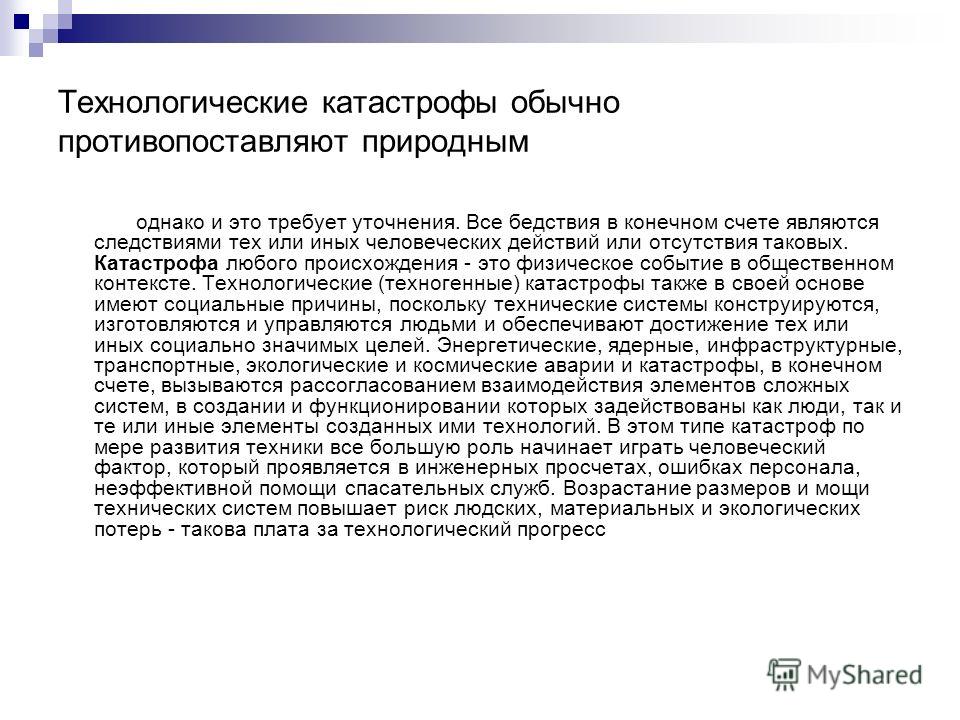
The very distinction between "natural" and "technological" disasters is, at least, ambiguous. Some experts generally deny him the right to exist, preferring to talk only about the catastrophic consequences of natural or technological disasters. According to this logic, a catastrophe of any origin develops primarily due to "weakness", vulnerability, inaction or even the complete absence of social structures that should protect people from such disasters. Nevertheless, the terminological division of natural disasters and technological disasters is fairly common. It is also recorded in many international documents, for example, in the Agreement on the organization of the activities of the Red Cross and Red Crescent, which was signed in Seville in 1997.
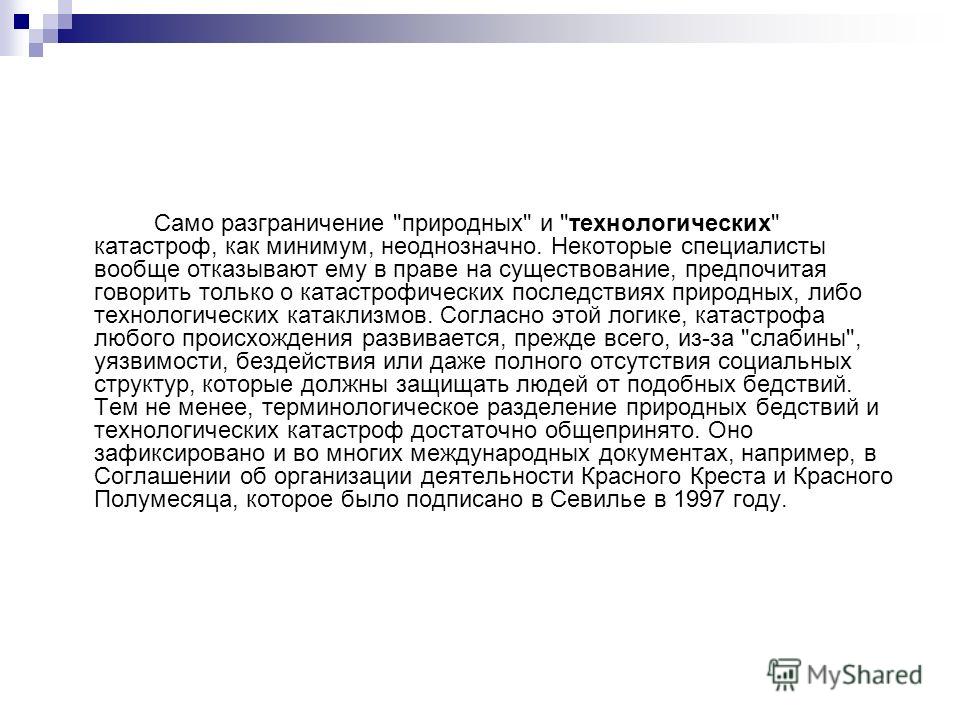
In English, the term "man-made disaster" is practically absent. American and English authors in such cases usually speak of "technological catastrophes" echnological catastrophes and "technological disasters" echnological disasters. Most often, these terms are used on an equal footing with expressions such as "man-made disaster" man-made catastrophe, human-made catastrophe and "man-made disaster" man-made disaster, human-made disaster. The term "anthropogenic catastrophe" is also used in the same sense, although it is used quite rarely. In the UN documentation, man-made disasters are usually divided into three main types: "industrial" (chemical contamination, explosions, radiation contamination, destruction caused by other causes), "transport" (accidents in the air, at sea, railways, etc.), "mixed" (occur at other facilities).
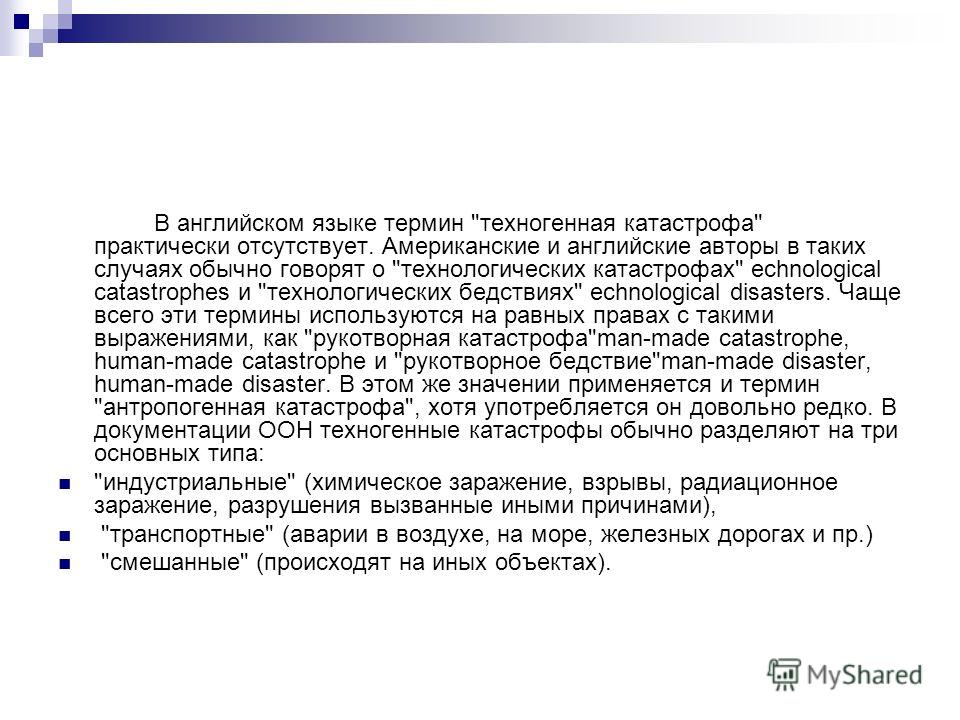
UN data show that man-made disasters are the third among all types of natural disasters in terms of the number of deaths. In the first place are hydrometeorological disasters, for example, floods and tsunamis, in the second - geological (earthquakes, mudflows, volcanic eruptions, etc.). The International Center for Disaster Epidemic Research (CRED) has been compiling a database of various disasters for several decades. An event is recognized as a disaster if it meets at least one of four criteria: 10 or more people died, 100 or more people were injured, local authorities declared a state of emergency, or the affected state asked for international assistance. Statistics show that the number of man-made disasters in the world has increased dramatically since the late 1970s. Transport accidents, primarily sea and river accidents, have become especially frequent. At the same time, despite the fact that the countries of Europe and North America have a much denser transport and industrial infrastructure than other continents, the largest number of victims of these disasters live in Africa and Asia. According to CRED, the mortality rate due to man-made disasters that occurred between 1994 and 2003 in industrialized countries is 0.9 deaths per 1 million inhabitants, for the least developed countries it is more than three times higher than deaths per 1 million.

A miner is one of the most dangerous professions in the world Despite all safety measures, the number of workers dying in mines is high, especially in China, Poland, Ukraine, Russia, India, South Africa. We are talking primarily about coal mines with increased methane content, which is always fraught with gas explosions. Almost every tragedy at a mine is a direct consequence of a gross violation of safety precautions in underground workings.
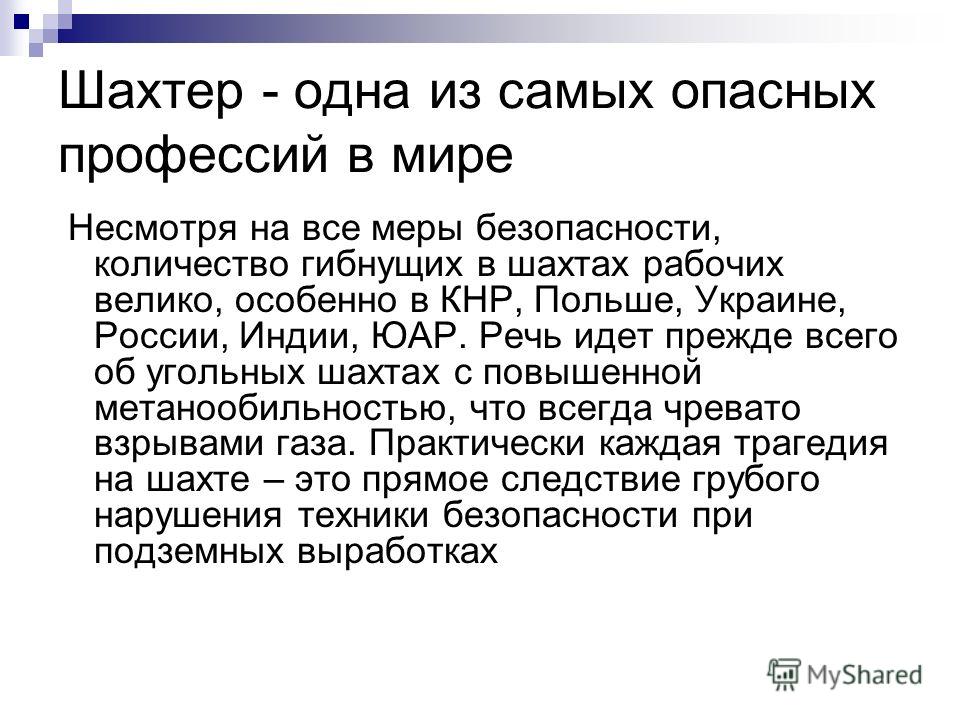
On May 24, 2007, at 7:40 am Moscow time, a methane explosion occurred at the Yubileinaya mine. The explosion killed 38 people, and another miner died at the Scientific Center for Health Protection without regaining consciousness. An investigation by a Rostekhnadzor commission showed that the explosion was caused by deliberate damage to the methane monitoring device. The commission concluded that the miners' work was interfered with by the frequent warning signals of the system, which is why they "redesigned" it. The very same explosion provoked a short circuit. However, the workers do not believe in this version. The miners believe that there could not have been a short circuit, and the detonator was flared coal, which smoldered for quite a long time in the waste rooms, emitting carbon monoxide. In addition, according to the workers, there is practically no safety system at the mines - the installed sensors are simply altered, almost on orders from above, since the bosses do not need downtime. This is the reality in Russia - profit is valued higher, much higher than human life. And "Yubileinaya" resumed its work soon after the tragedy. Moreover, just three months before the tragedy - on February 12, 2007 - a similar explosion occurred at this mine. Fortunately, no one was hurt then.

Attention to the problem! There are reasons to assert that insufficient attention is paid to the global problem of technological accidents in the world. In today's complex technical world, industrial accidents can kill thousands of people. Combining the efforts of scientists and industrialists from different countries can be very useful in "mitigating" this global problem.
